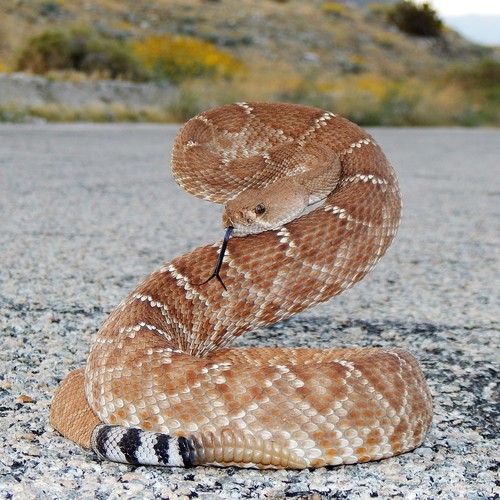
Red Diamond Rattlesnake
The Red Diamond Rattlesnake, with its striking red hue and iconic rattle, commands attention. An adept predator, it helps control rodent populations. Its heat-sensing pits make it a master in desert and scrub habitats, embodying both beauty and ecological balance.
13-15 years
Lifespan
Grey, Red, Light-Brown
Color
Low
Aggression
Least Concern
Conservation Status
Decreasing
Population Trend
Characteristics
Crotalus ruber, commonly known as the Red Diamond Rattlesnake, is native to southwestern United States and northwestern Mexico. It thrives in chaparral, desert, and coastal sage scrub habitats. This venomous snake is known for its distinctive reddish-brown hue, heat-sensing pits, and rattling tail.
Distribution Range of the Red Diamond Rattlesnake
Crotalus ruber, commonly known as the Red Diamond Rattlesnake, is native to the southwestern United States and northwestern Mexico. Its geographical distribution includes southern California in the United States, extending south into the Baja California Peninsula and the coastal areas of Sonora in Mexico.
Red Diamond Rattlesnake's Habitat
Environmental Conditions
Crotalus ruber typically inhabits arid and semi-arid regions, including chaparral, desert scrub, and coastal sage scrub environments. The climate in these areas is characterized by hot, dry summers and mild, wet winters, which is conducive to the snake's lifestyle.
Ecological Niche
This species occupies a niche as a terrestrial predator, primarily preying on small mammals, birds, and lizards. It is well-adapted to its environment, utilizing its cryptic coloration to blend into the rocky and sandy terrain for both ambush hunting and protection from predators. Crotalus ruber is also known for its ability to tolerate a range of temperatures, which allows it to be active both day and night, depending on the season and temperature conditions.
Copyright @ Nature Style Limited. All Rights Reserved.
 English
English